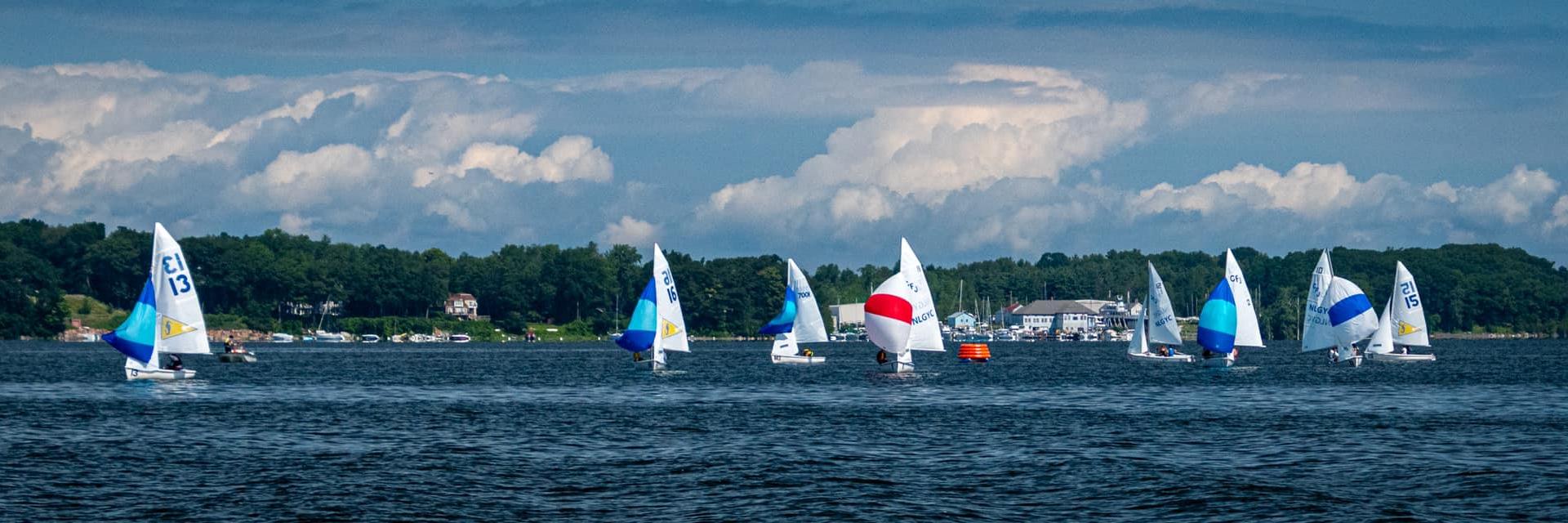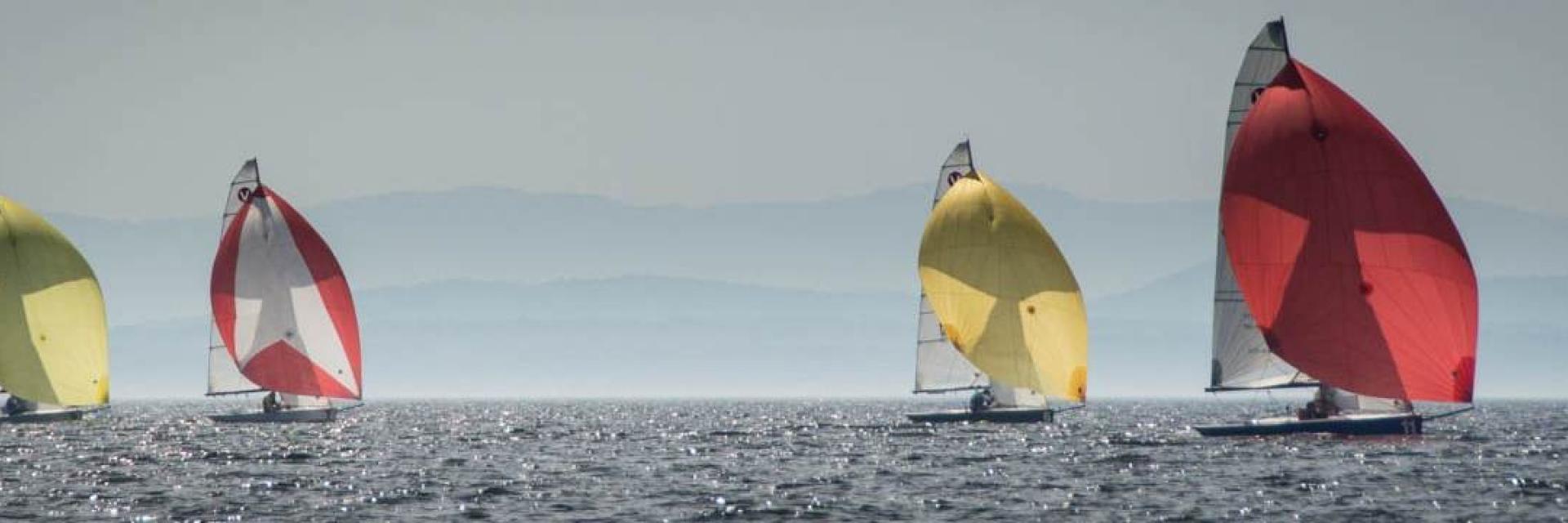
Junior Sailing Curriculum
| LCYC Junior Sailing Curriculum |
Beginner Class
Qualifications :
- Ability to swim and tread water
Students will learn :
- Safety
- LCYC Junior Sailing Rules and harbor rules
- General water precautions safety whistle, sun protection, hydration, correctly wear a PFD, put on and take off a PFD in the water
- Basic sailing safety maneuvers capsize recovery, safety position, respond to a storm warning, and avoid collision
- Seamanship
- Respect for others, positive view of sailing, and teamwork
- Tie figure 8 knot, square knot, cleat knot, and bowline
- Rig and de-rig an Opti or FJ
- Understand wind direction
- Understand towing how to safely attach the Opti/FJ and steering
- Boathandling
- Steering, and trimming the main sail and/or jib
- Docking, leaving and returning
- Sit in correct position in the boat and hold the tiller and main sheet correctly or jib sheet
- Tacking and gybing
- Points of sail
- Sail a course triangle, figure eight, and square
Intermediate Class
Qualifications :
- Ability to swim and tread water
- Understand wind direction
- Rig and de-rig
- Steer, and trim sail(s)
- Tack and gybe
- Basic knots
Students will learn :
- Safety
- All safety skills from beginner class will be reviewed
- Seamanship
- Respect for others, and equipment.
- Positive view of sailing and teamwork
- Use sailing language to advance communication on the water (leeward/windward, starboard/port)
- Knots will be reviewed
- Take care of an opti/FJ storage, washing, and proper sail care
- Understand how the mechanics of a sail work
- Simple navigation
- Simple wind recognition puffs, lulls.
- Boat handling
- Review of docking
- Recover from irons
- Proper body position and weight placement in the boat
- Downwind sailing reach, run, trim, steering, sail by the lee, adjust dagger board
- Upwind sailing close-hauled, straight course, trim for speed, telltales
- Review of sailing courses triangle, figure eight, and square
- Stop and start the boat
- Execute a 360
- Review of points of sail, and points of sail for speed
- Body weight in the boat steering with weight, adjustments for points of sail
- Sail shape when, why, and how
- Sail backwards
- Racing
- Basic introduction to racing
- Basic tacking and sportsmanship rules
- Mark rounding
- Basic racing courses and starts
Advanced Class
Qualifications :
- Ability to swim and tread water
- Understand wind direction
- Rig and de-rig
- Steer, and trim sail(s)
- Tack and gybe
- Basic knots
- Dock successfully
- Understand simple navigation
- Recover from irons
- Understand basic speed principles (trim for speed, weight placement for speed)
Students will learn :
- Safety
- All safety skills from beginner and intermediate classes will be reviewed
- Seamanship
- Continue use of sailing language to enhance communication on the water
- Knots will be reviewed
- Understand how the mechanics of a sail work
- Navigation
- Wind recognition puffs, lulls, headers
- Respect for others, and equipment
- Positive view of sailing and teamwork
- Boat Handling
- Review of docking
- Recover from irons
- Proper body position and weight placement in the boat
- Downwind sailing reach, run, trim, steering, sail by the lee, adjust dagger board
- Upwind sailing close-hauled, straight course, trim for speed, telltales
- Sailing courses for best speed triangle, figure eight, and square
- Stop and start the boat quickly
- Execute a 360 and 720
- Review points of sail for speed
- Body weight in the boat steering with weight, adjustments for points of sail
- Sail shape when, why, and how
- Sail backwards
- Spinnaker use
- Racing
- Rules of racing, tacking and sportsmanship rules
- Mark rounding
- Race courses and start techniques
- Introduction to team racing
- Downwind and upwind racing techniques




